Annapurna Circuit Trek is a moderately difficult Himalayan adventure where you need to walk on varying high altitude ground under ever-evolving climatic conditions. The trek is more than 200 kilometers with an exposure to challenging as well as rough trails with vertical climbs and descents, which not only demand physical stamina but mental toughness as well.
The trek covers diverse topographies from subtropical jungle to alpine desert with several high rises and falls. Moreover, it involves crossing the high pass of Thorong La which is physically demanding. The difficulties of the Annapurna Circuit go beyond physical exertion alone. Trekkers would also need to brace themselves against changing conditions, cold weather and even the prospect of altitude sickness, too. The trek route is also mentally challenging requiring patience and acceptance on more notably long days of hiking.
And yet despite all its toughness, the Annapurna Circuit is also an exhilarating affair of trekking through the vast expanses of picturesque scenery all under the shadow of the Annapurna and Dhaulagiri mountain ranges. For all its tests of endurance and stamina, the pure sense of achievement and satisfaction is unparalleled. The trek’s difficulties contribute to crafting an unforgettable experience, blending unparalleled beauty, tranquility and the drive to exceed personal boundaries, making it a genuine pursuit for those in search of adventure.
For fit, determined and adequately prepared trekkers, the Annapurna Circuit offers a fulfilling experience that is simply unbeatable. The trek provides adventure seekers with a feel of awe at the scenery of the Annapurna and Dhaulagiri ranges, a close connection with the cultures of the region and an achievement that comes from having braved such an adventurous trail.
Annapurna Trek Difficulty Factors
Long Distance and Duration
Annapurna Circuit Trek exceeds 200 kilometers in distance. This makes it a long and challenging journey. Trekkers are on the trail for anything between 15 to 20 days which requires strong physical endurance as well as mental toughness. The walking hours per day with some days taking up to 8 to 9 hours can be extremely exhausting. The trek demands steady endurance and energy and you will need to prepare yourself for a lot of physical activity time.
There is a necessity to build endurance before setting out on the trek to withstand the extended duration of the hike. The general practice of hiking along with cardiovascular and strength training will enhance your overall fitness and resistance.
Likewise, during the trek, taking frequent rest breaks and required acclimatization days are necessary in order to prevent fatigue, enable recovery and avoid altitude sickness. You need to walk at a reasonable pace to avoid overexertion and maintain hydration and nutrition to keep your energy level high and keep going. The balanced schedule of reasonable distances for each day will allow you to harmonize the physical demands and enjoy a successful trek.
High Altitude
One of the most important considerations along the intrepid Annapurna Circuit Trek is height, particularly while going over Thorong La Pass at an altitude of 5,416 meters. On each higher climb, oxygen intake is reduced due to thinning of the air which carries only less oxygen. Eventually, the altitude sickness symptoms of headache, nausea, lightheadedness, dizziness and shallow breathing prevail. The possibility is mostly common after exceeding the height of 2,500 meters.
The key to solving this high altitude issue of altitude sickness is acclimatization. You need to climb gradually with rest and acclimatization time. Spending extra days in certain locations for acclimatization is recommended before going to alpine altitudes. Hydration, a healthy diet and carrying medication for altitude sickness can also minimize symptoms. Descending right away if signs of severe altitude sickness are felt is crucial. Being mindful of your body and not rushing the hike can prevent serious complications.
Remoteness and Limited Facilities
Annapurna Circuit is a wilderness trek and you spend nights in remote mountain villages with fewer services and facilities. Clean water, reasonable food sources and medical assistance may be lacking, especially at higher elevations. Likewise, receiving aid in the event of an emergency or illness could take a long time, so independence and preparation are essential. The absence of facilities makes the trek difficult for those accustomed to modern things.
In order to cope with isolation and sparse facilities, you need to be adequately equipped. Bringing a well stocked first-aid kit, additional food and light snacks and water purification solutions is necessary. Additionally, it is advisable to have a reserve source of power for electronic devices since electricity is typically unreliable or nonexistent in the more remote parts of the trek. Being well prepared and self sufficient can help you offset the dangers posed by the isolation of the trek.
Rugged Terrains
The Annapurna Circuit terrain is vastly diverse with smooth trails at lower altitudes giving way to slanted, boulder-studded paths on moving upwards. Steep climbs and downhill walks are the usual encounters making it physically hard on the knees and legs. Trails in alpine zones can be uneven and slippery at times, even more so when they are wet or icy, increasing the hazard of slipping and falling. Getting through these requires vigilance, sure feet and planning of proper gear.
Sturdy fitting footwear is required to navigate the rugged terrain that offers stability and traction. Hiking poles can assist with balance and relieve knees of some stress especially when walking down steep slopes. Pack extra clothing to accommodate changing weather conditions since it is cold in the majority of areas. Preparing for different types of terrain will keep you comfortable and safe.
Uncertain Weather
The weather in the high Himalayan region including the Annapurna Circuit is unpredictable. You can face intense sunshine to heavy rain and snow during the journey. Since the weather changes rapidly, it is difficult to forecast conditions which can affect your trekking schedules. Sudden storms or sharp temperature drops can render the trek uncomfortable or unsafe as well.
You should be prepared with proper weather gear like a waterproof jacket, insulating layers, windbreakers and gaiters. Your packing for clothes should be in layers to accommodate varying climatic zones. A decent rain cover for backpacks must also be brought along to safeguard your belongings. Similarly, monitoring weather reports wherever possible will help plan the day’s trek. Furthermore, being prepared with an open and flexible schedule to make arrangements for inclement weather or delays will help you adjust your plan without impacting safety or pleasure.
How to Prepare for Annapurna Circuit Trek Challenges?
Upgrade Yourself Both Physically and Mentally
It takes a solid foundation in physical fitness and mental power to prepare for the Annapurna Circuit Trek. The trek involves long walking days on varied terrain and therefore training for endurance, strength and stamina is essential.
You can start to get better physically by building cardiovascular endurance through regular short walks and aerobics. Also develop your leg and core muscles through exercises like squats, lunges and uphill walking.
Navigating through narrow trails, icy paths and high passes demands concentration and you must also be mentally prepared for days of difficult trekking in isolation, with little access to luxuries.
Being mentally robust to endure fatigue, high altitude and bad weather will help sustain challenges and push you toward victory. Success visualization, goal setting and a positive mental attitude will take you out of the tough stages of the trek.
Book With a Trusted Trekking Company
Organizing your trek with a reputable trekking company is the key to staying well prepared for the Annapurna Circuit. An authorized company will provide you with experienced guides and proper equipment and is able to assist with any hindrance that is likely to be faced
They will arrange the transport, permit and booking of accommodation and any other logistical aspect of the trek. With all these taken care of you can travel stresslessly while enjoying comfort and safety. Registered companies also operate with responsible tourism and with safety protocols in place which is something that is crucial when trekking in such far-flung areas.
Get a Comprehensive Travel Insurance
The remote nature of the Annapurna Circuit Trek and the risks associated with a high altitude environment requires comprehensive insurance coverage. Your insurance must cater to medical emergencies, evacuation, baggage losses and delay/cancellation of the trip. With travel insurance in hand, you can trek without any worries being assured that you are financially secure in case something goes wrong.
Choose the Right Time for Trekking
The time of your trek is an important aspect of your overall experience. The best time to trek the Annapurna Circuit is usually during spring and autumn with stable weather, good visibility and moderate temperature. The risk of heavy rain or snowfall is minimal and the trails are dry and distinct that are easier to navigate. The sky is crystal clear, devoid of clouds and the vistas of the surrounding mountain peaks are displayed without any obstruction.
Trekking during these best periods will allow you to appreciate the charm of the circuit without having to face harsh weather conditions.
Hire a Professional Guide and Strong Porter
A guide will provide you with valuable information about the geography, history, culture, nature and climatic conditions of the region. They will also assist with navigation, keeping you on track and away from harm.
Likewise, the porter will be carrying your heavy backpacks on the way. They will give you a load release so that you can focus on the trek itself. Their assistance is invaluable since lighter loads keep you from getting fatigued and make the journey a lot easier.
Overall, having a porter and a guide will make the experience safer, more pleasant and less exhausting.
Light and Appropriate Packing
Although you may wish to carry everything, carrying too much will slow you down and tire you more. So, packing only hose most indispensable items for a trek is necessary. The principle is pack light but do not miss out on anything important.
Carry only essentials such as layers of clothes, trekking poles, sleeping bags, first-aid kit, personal medications, a headlamp, sun protection items, a water bottle, gadgets and documents. Lightening your load ensures comfort and mobility while trekking.
Impactful Tips for Overcoming Annapurna Trek Difficulties
- Drink plenty of water (at least 4 liters per day) to prevent altitude sickness and stay charged up.
- Pack only the essentials to help avoid putting extra strain on your body.
- Wear well fitted and sturdy boots with good grip for comfort, protection and efficient navigation.
- Get ready for temperature fluctuations by dressing in layers that you can add or remove.
- Carry high calorie snacks like nuts, trail mix or granola bars to stay fueled.
- Do not overdo anything. Rest and heed your body’s warning signs.
- Take a slow pace to allow adequate time for your body to acclimatize to the thin alpine air.
- Use reliable trekking poles to minimize knee stress on steep downhill sections and for stability.
- Keep an eye on changing weather patterns through recent weather updates so you can modify your plans.
- Stay positive and resilient which is the secret to braving challenges on the trail.
- Travel with a guide since they will take care of navigation and security while adding depth with local knowledge.

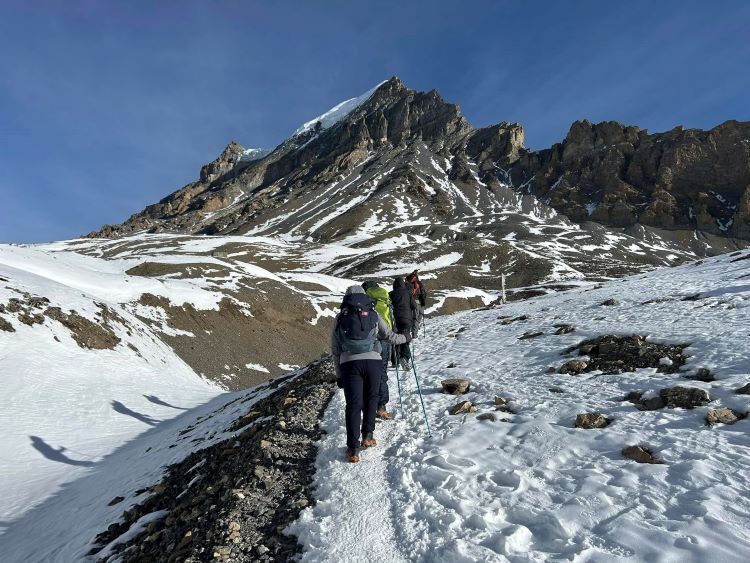
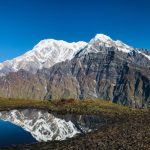 Saturday, August 30th, 2025
Saturday, August 30th, 2025
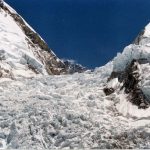 Wednesday, August 27th, 2025
Wednesday, August 27th, 2025
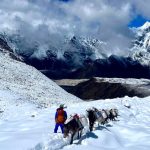 Wednesday, August 20th, 2025
Wednesday, August 20th, 2025
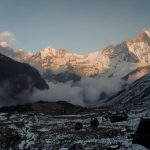 Wednesday, August 20th, 2025
Wednesday, August 20th, 2025
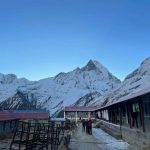 Wednesday, August 13th, 2025
Wednesday, August 13th, 2025
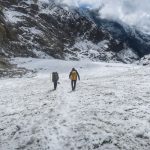 Wednesday, August 6th, 2025
Wednesday, August 6th, 2025
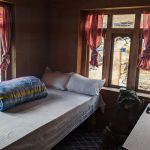 Monday, July 7th, 2025
Monday, July 7th, 2025
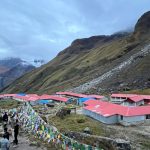 Thursday, July 17th, 2025
Thursday, July 17th, 2025
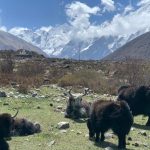 Monday, July 7th, 2025
Monday, July 7th, 2025
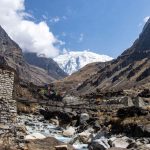 Friday, May 9th, 2025
Friday, May 9th, 2025
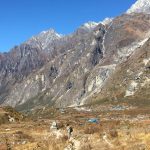 Saturday, June 14th, 2025
Saturday, June 14th, 2025
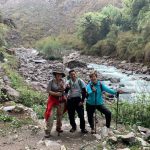 Wednesday, June 25th, 2025
Wednesday, June 25th, 2025
